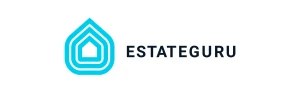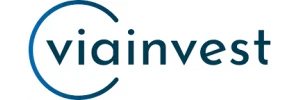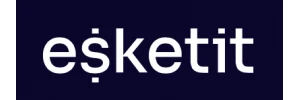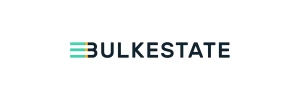Company Overview: Kiva's Mission and Presence in the U.S.
Kiva Microfunds, Inc., a registered 501(c)(3) nonprofit organization, has established itself as a pioneering force in the realm of digital lending since its founding in October 2005 by Matt Flannery and Jessica Jackley. Headquartered in San Francisco, California, Kiva operates with a clear mission: to alleviate poverty through financial inclusion by connecting a global community of lenders with individuals and small businesses that lack access to traditional financial services. In the United States, Kiva provides a distinctive offering, primarily focusing on empowering local entrepreneurs.
The core of Kiva’s business model is its peer-to-peer microlending platform. Unlike commercial lenders, Kiva does not profit from its loans. Instead, it relies on donations, grants, and optional "tips" from lenders to cover its operational costs. This allows Kiva to offer truly impactful financial products. For U.S. borrowers, this translates into a unique opportunity to access capital without the burden of interest. Kiva achieves its reach by partnering with a network of local "field partners," which include microfinance institutions, non-governmental organizations, and social enterprises, who are instrumental in vetting borrowers and disbursing funds both domestically and in over eighty developing countries worldwide. The organization is governed by a dedicated volunteer Board of Directors, ensuring its commitment to its nonprofit charter and social impact.
Kiva's leadership team, including CEO Neville Crawley and co-founders Premal Shah and Jessica Jackley, continues to steer its strategic direction, emphasizing expansion of its financial inclusion efforts. While Kiva is globally recognized for its microloans in developing nations, its U.S. program is a vital component of its work, supporting the growth of small businesses and fostering economic resilience within American communities. This dual approach underscores Kiva's comprehensive commitment to financial access for the underserved.
Understanding Kiva's Loan Products, Rates, and Terms for U.S. Borrowers
For entrepreneurs and small business owners in the United States, Kiva offers a highly attractive lending product: 0% APR small-business loans. This means borrowers pay back exactly what they borrowed, without any additional interest charges. This is a significant differentiator in the U.S. lending market, where interest rates can often be a substantial barrier for new or struggling businesses.
Loan amounts available through Kiva U.S. typically range from $1,000 to $10,000. These funds are designed to support a wide array of business needs, from inventory purchase and equipment upgrades to marketing initiatives and working capital. The repayment terms for these U.S. loans are generally structured over a period of six to twelve months, offering a manageable repayment schedule for small enterprises. Importantly, Kiva U.S. loans come with zero fees. There are no origination fees, processing fees, or even late fees, which further enhances the appeal of these loans as a truly accessible financial tool.
One of the most distinctive aspects of Kiva's U.S. lending model is its approach to collateral. Unlike traditional lenders who often require significant collateral or personal guarantees, Kiva U.S. loans are unsecured. Underwriting decisions are primarily based on the borrower's personal and community character, their business plan, and the support they garner from their local community through the initial crowdfunding phase on Kiva's platform. This character-based lending model significantly lowers barriers for entrepreneurs who may not possess substantial assets or a lengthy credit history.
While Kiva also facilitates global microloans where field partners may charge interest (typically ranging from approximately 10% to 30% APR, depending on the country and partner), it is crucial for U.S. borrowers to remember that their specific loans through Kiva U.S. are distinctively interest-free and fee-free. This commitment to affordable capital underscores Kiva's non-profit ethos and its dedication to fostering economic growth from the ground up.
The Kiva Application Process and Technology Experience
Accessing a Kiva loan in the United States begins with an entirely digital application process, reflecting Kiva's modern approach to financial services. Borrowers apply directly online via Kiva’s official website or through portals provided by Kiva's local lending teams. There are no physical branches to visit, making the process convenient and accessible from anywhere with internet access.
Application Process and Requirements
To apply for a Kiva U.S. loan, potential borrowers must typically meet a few key requirements. While Kiva focuses on character-based lending rather than traditional credit scores, identity verification is essential. Applicants will need to upload government-issued identification, provide proof of address, and link a PayPal account for disbursement and repayment purposes. The process often involves an initial private fundraising period, where the borrower gathers support from their personal network. This "social underwriting" aspect helps demonstrate community trust and commitment, which is a crucial factor in Kiva's model.
Once the private fundraising is successful, the loan request goes live on the Kiva platform for the general public to fund. Lenders contribute as little as $25, pooling funds until the full loan amount is reached. Kiva relies on the due diligence performed by its local lending teams and field partners for assessing creditworthiness, which may include reviewing cash flow analysis and community reputation rather than solely relying on FICO scores.
Loan disbursements for U.S. borrowers are typically handled via PayPal or ACH bank transfer, ensuring a direct and efficient transfer of funds once the loan is fully funded. Repayments are also managed digitally, flowing from the borrower, often through PayPal, to Kiva, which then credits the individual lenders' accounts on a monthly basis.
Mobile App Features and User Experience
Kiva extends its digital accessibility through its highly-rated mobile application, available on both iOS and Android platforms. The app generally receives strong reviews, boasting ratings of approximately 4.7 out of 5 stars on the iOS App Store and 4.5 out of 5 stars on Google Play. Users praise the app for its ease of use and its ability to connect them directly to the impact of their lending or borrowing.
Key features of the Kiva mobile app for borrowers and lenders alike include:
- Borrower Browsing: Lenders can easily browse profiles of entrepreneurs seeking loans, reading their stories and understanding their business needs.
- Loan Tracking: Borrowers can monitor the funding status of their loan, while lenders can track the progress of loans they have contributed to.
- Repayment Management: The app facilitates easy management of loan repayments for borrowers and provides updates on repayments for lenders.
- Impact Updates: Users can often receive updates on the impact of the loans, showcasing how the funds are making a difference in communities.
The Kiva website, kiva.org, serves as the central hub for the platform, featuring detailed borrower profiles, a comprehensive loan search function, impactful updates, and tools for social sharing. This robust digital ecosystem ensures that both borrowers and lenders have a seamless and engaging experience.
Regulatory Compliance, Market Standing, and Customer Feedback
As a prominent nonprofit organization operating in the financial sector, Kiva adheres to a strict framework of regulatory compliance. Kiva Microfunds, Inc. is registered in California as a 501(c)(3) nonprofit and is subject to U.S. nonprofit regulations, including filing IRS Form 990 annually, which provides transparency into its financial operations. The organization also complies with applicable U.S. financial regulations, including Anti-Money Laundering (AML) and Know Your Customer (KYC) guidelines set forth by FinCEN. To date, there have been no public regulatory actions or penalties levied against Kiva, indicating a strong track record of compliance.
Kiva's commitment to consumer protection is evident in its transparent borrower fee structure (0% APR and zero fees for U.S. loans) and its voluntary tip model for operational costs. Borrowers receive detailed loan updates, promoting informed decision-making throughout the loan lifecycle. This focus on transparency and ethical practices helps build trust with its user base.
Market Position and Competition in the U.S.
Kiva holds a leading position in the online microlending sector, particularly distinguished by its global reach and its unique 0% APR offering in the U.S. While its direct competitors are few in the nonprofit microlending space, it does compete for borrower attention with other P2P lending platforms and traditional small business lenders. In the U.S. business segment, platforms like Prosper and LendingClub offer peer-to-peer loans, but these are commercial entities that charge interest rates, often significantly higher than Kiva's zero-interest model. Another notable competitor in the nonprofit P2P space is Zidisha, which also focuses on direct lender-borrower connections. However, Kiva's extensive network of field partners and its established brand presence give it a significant advantage.
Kiva's key differentiators include:
- 0% APR in the U.S.: This is perhaps its strongest competitive advantage for American small businesses.
- Volunteer Donation Model: Operational costs are covered by donations and voluntary lender "tips," not borrower fees or interest.
- Focus on Underserved Groups: A strong emphasis on women entrepreneurs, rural businesses, and refugees underscores its social mission.
Customer Reviews and Feedback
Overall customer experience with Kiva is largely positive, as reflected in its high app store ratings. Users frequently commend the platform's ease of use, the transparency of its operations, and the profound sense of impact they feel by participating. Success stories abound, showcasing U.S. entrepreneurs who have utilized 0% Kiva loans to expand their small businesses, create jobs, and contribute to local economies. Globally, Kiva's platform has enabled women farmers to increase their yields and students to fund their education.
However, some common complaints or limitations noted by users include:
- Limited Loan Amount Flexibility in the U.S.: The $1,000 to $10,000 range may not be sufficient for all small business needs.
- Variable Disbursement Speed: While generally efficient, the speed of disbursement can sometimes vary, especially for global loans routed through field partners.
Customer service is primarily provided through email support and through community-run Local Lending Teams. These teams play a crucial role in providing personalized assistance and guidance to borrowers throughout the application and repayment process, adding a human touch to the digital platform.
Practical Advice for Potential Borrowers in the United States
For U.S. entrepreneurs considering a Kiva loan, understanding the nuances of the platform is crucial for a successful application and repayment experience. Kiva offers a remarkable opportunity for capital without the burden of interest, but it requires active participation and a clear understanding of its unique model.
Eligibility and Preparation
Firstly, assess your eligibility. Kiva U.S. loans are specifically for small businesses that may be underserved by traditional financial institutions. While a perfect credit score is not a prerequisite, Kiva looks for businesses with a clear purpose and a positive community standing. Prepare a compelling story about your business, its mission, and how the loan will be used. This narrative is vital for attracting lenders on the platform.
Gather all necessary documentation beforehand: government identification, proof of address, and ensure you have a functional PayPal account. A strong, well-thought-out business plan, even if informal, will strengthen your application. Think about how you will demonstrate your ability to repay the loan within the 6 to 12-month timeframe, considering your business's cash flow.
The Community and Social Underwriting Aspect
One of Kiva's most distinctive features is the "social underwriting" phase. You will be asked to gather support from a certain number of individuals within your personal network to fund an initial portion of your loan. This demonstrates your credibility and community backing. Actively engaging your friends, family, and local community early in the process is paramount. This initial support acts as a vote of confidence, signaling to the wider Kiva lending community that your business is viable and trustworthy.
Commitment to Repayment
While the 0% APR is highly advantageous, it is essential to remember that a Kiva loan is still a serious financial commitment. The platform boasts an impressive 96% repayment rate globally, underscoring the responsibility borrowers undertake. Plan your budget carefully to ensure you can meet your monthly repayment obligations. Maintaining a good repayment history not only helps you but also contributes to the sustainability of Kiva's model, allowing other entrepreneurs to access vital capital.
Leveraging Kiva's Resources
Utilize the resources Kiva provides. The platform's website offers extensive guides, and the Local Lending Teams in the U.S. are invaluable resources for guidance through the application process. Don't hesitate to reach out to them for clarification or assistance. The mobile app can also be a helpful tool for tracking your loan status and managing repayments efficiently. Kiva is more than just a lender; it's a community that supports entrepreneurs, and engaging with that community can provide not just capital, but also valuable connections and mentorship.








